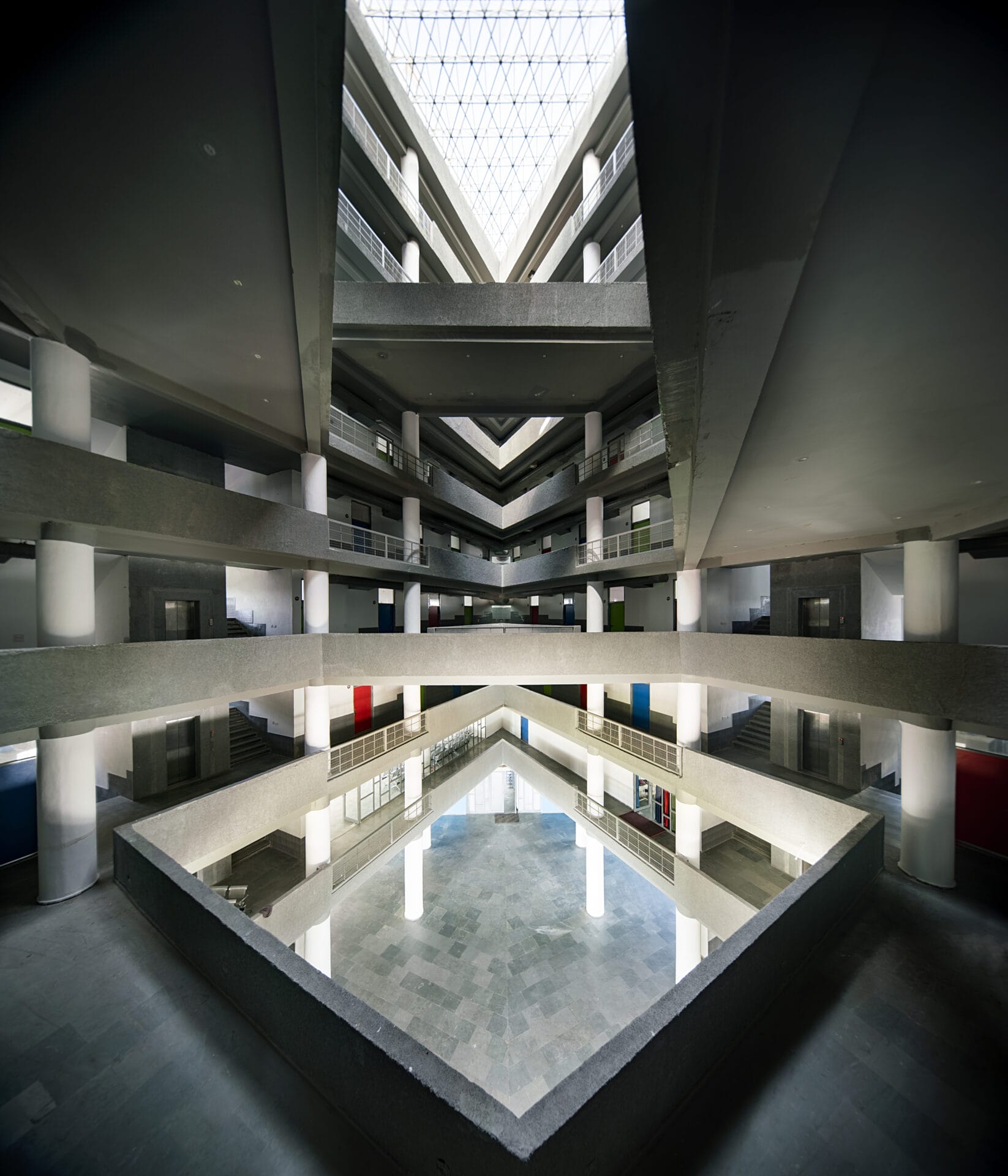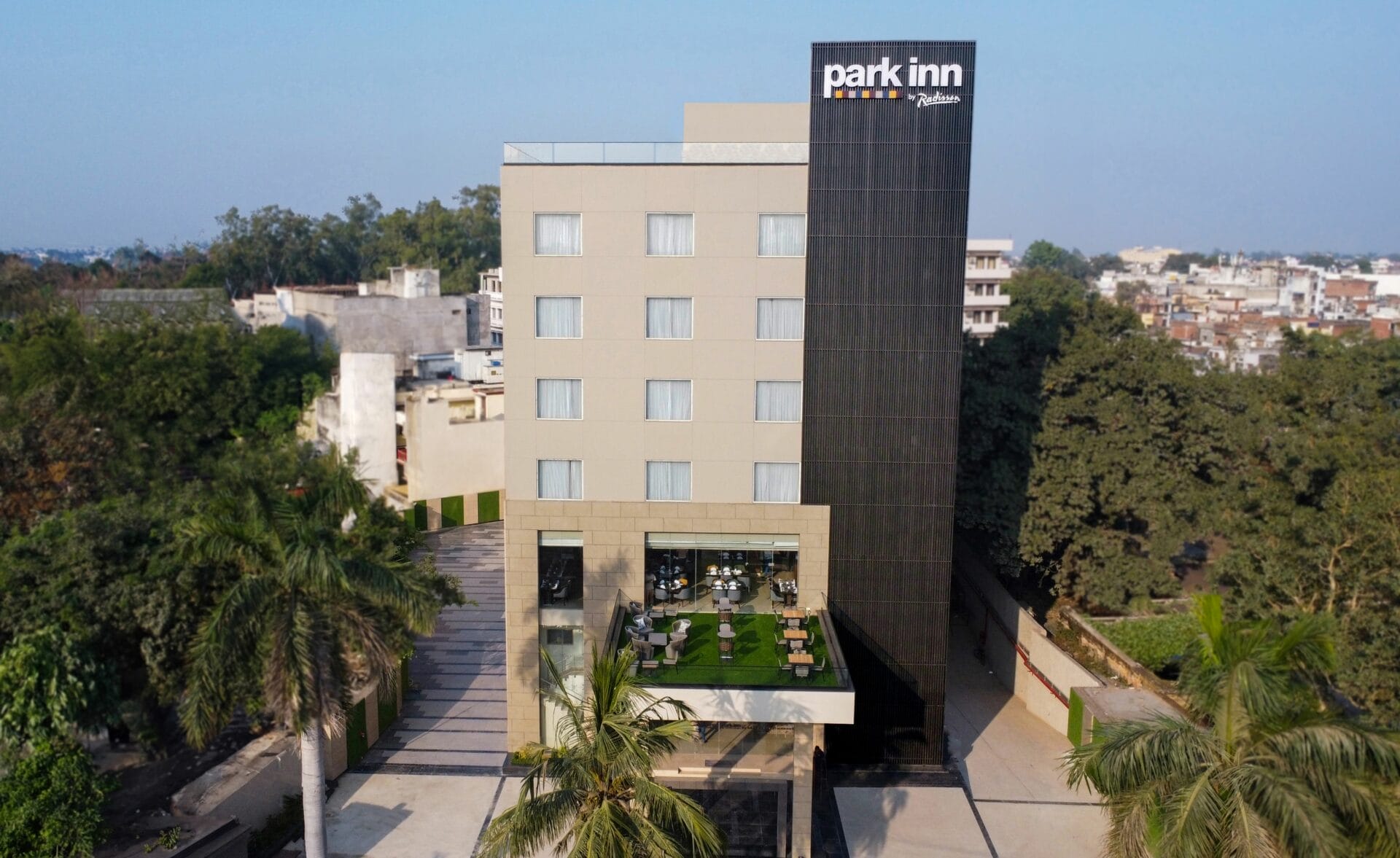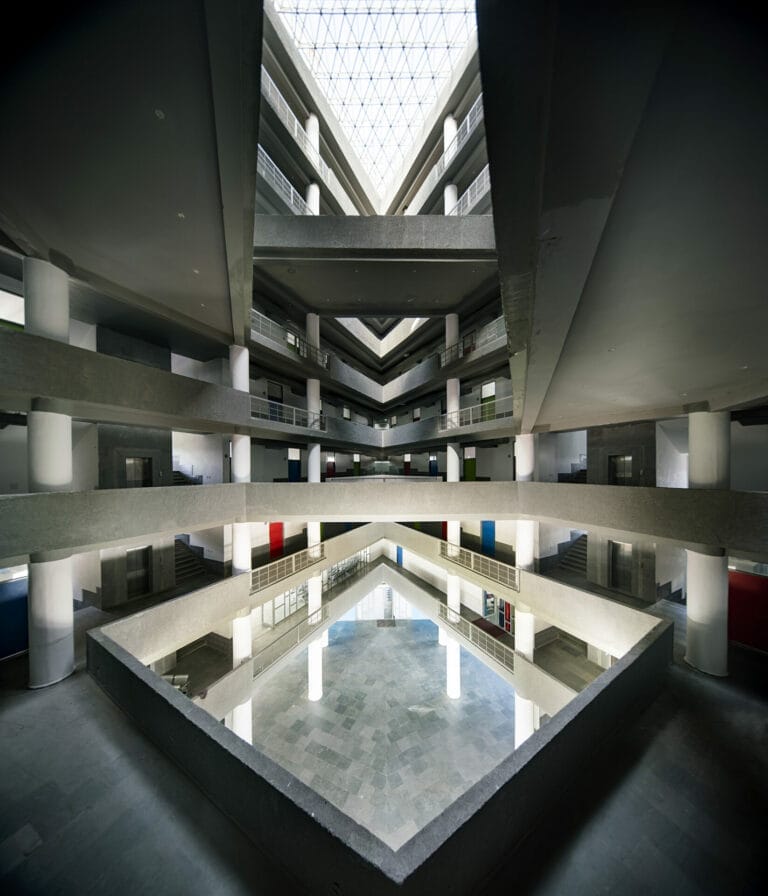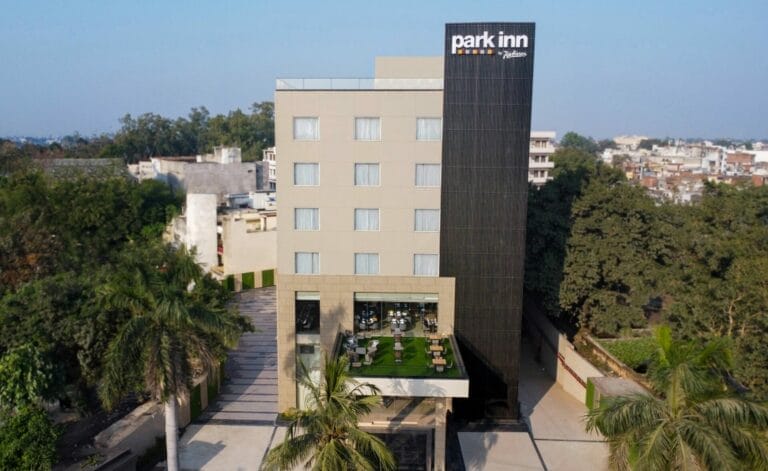The Victoria Memorial – an immaculate architecture fashioned in the ‘Italian Renaissance’ style with an essence of Mughal touch stands royally in the middle of 21 expansive lush green gardens covering 64 acres of land in Kolkata. The gardens were designed by Lord Redesdale and David Prain, and have a number of significant statues, the most famous out of which is the beautiful bronze statue of Queen Victoria herself.
   | In the course of praising Frampton’s sculpture, the 1898 issue of The Studio, provides information about its size and symbolism: The figure, stands with its pedestal twenty-seven feet high. The statue is to be of light bronze, the sceptre of ivory with gold ornaments, the orb of blue lapis-lazuli, surmounted” by a golden figure of St. George; the crown and wreath will also be in gold, and the cushion behind the figure enameled, probably in pale blue and white. The robes are those pertaining to the Order of the Star of India which her Majesty wore when she assumed the title of Empress. The lion and tiger side” by side on the back of the statue typify respectively the British Kingdom and the Indian Empire. Two figures at the top represent Art and Literature and Justice. The capitals which support them are carved to represent English oak leaves, and a typical Indian tree, which is a sacred symbol of the Indian religion. Roses ornament the throne behind the head of the Queen. The base, which will be of richly colored marble, will bear the Royal arms in enamel, supported” by bronze figures of two Indians. It is fortunate that a work of art, at once novel in treatment and remarkably stately in its conception, should represent the flourishing condition in our Indian empire but it is impossible to avoid feeling a slightly jealous regret that so fine a work should leave the country. The polychromy provided by the “the orb of blue lapis-lazuli” and “golden figure of St. George” does not appear in the photographs, so that assuming the gold leaf did not wear away, the final work probably replaced these elements and the cushion behind the Queen “enameled, probably in pale blue and white,” with bronze. The marble also does not appear to be “richly coloured marble.” |
The Victoria Memorial
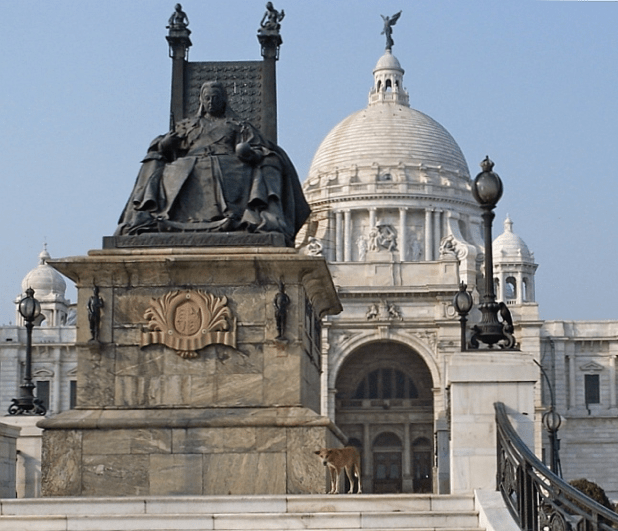
The memorial is a landmark which commemorates Queen Victoria’s 25-year reign in India. The credit of which goes to Lord Curzon, the then Viceroy of India, who on the death of Queen Victoria raised the question of erecting a ‘stately’ memorial as homage to the late queen. Funds were voluntarily raised by the princes and people of India amounting to Rs.1,05,00,000\- for the construction and the Prince of Wales, King George V, laid the foundation stone on January 4, 1906 and the memorial was formally opened to the public in 1921.
This memorial is a melting and merging if the finest of architectural elements of Islamic, Deccan, British, Venetian and Egyptian and the credit for this go to England’s renowned architect Sir William Emerson, president of the British Institute of Architects, who designed and planned the building. The famous Messrs. Martin & Co. of Calcutta under the proprietorship of Sir R. N. Mookerjee were entrusted with the construction. The memorial belongs to the Hindu-Saracenic or Indo-Saracenic revivalist style of architecture while incorporating elaborate construction and engineering techniques with the aesthetic sensibilities of gothic revival of continental Europe with Indian and Indo-Islamic architectural elements involving ingenious skill of artisan’s for minute decorations and ornamentations.
The Memorial’s grandeur at a height of 200 feet (184 ft up to the base of the figure of Victory, which is again 16 ft high) is accentuated by its serene corridors. This building covers 338 ft by 228 ft constructed in marble from Makrana quarries keeping to the standards of advanced British Structural Engineering Standards 1800s, which include infrastructure of iron, steel and poured concrete. The total weight of the Victoria Memorial with marble cladding comes roughly around 80,300 tonnes.
This stately memorial has a dome which is topped by an enormous (16′ high, 3-tonne) bronze statue of Nike Angel of Victory holding a bugle in her hand. Surrounding the main dome are intricate sculptures emblematic figures of art, charity, justice and architecture. The north porch of the monument depicts sculptures of learning, motherhood and prudence. Richness of the architecture are clear in the dome, clustered with four subsidiary, octagonal domed chattris, the high portals, the terrace and the Moghul-style corner domes towers, carving round the window arches which reveal the many Saracenic touches.
The spectacular museum
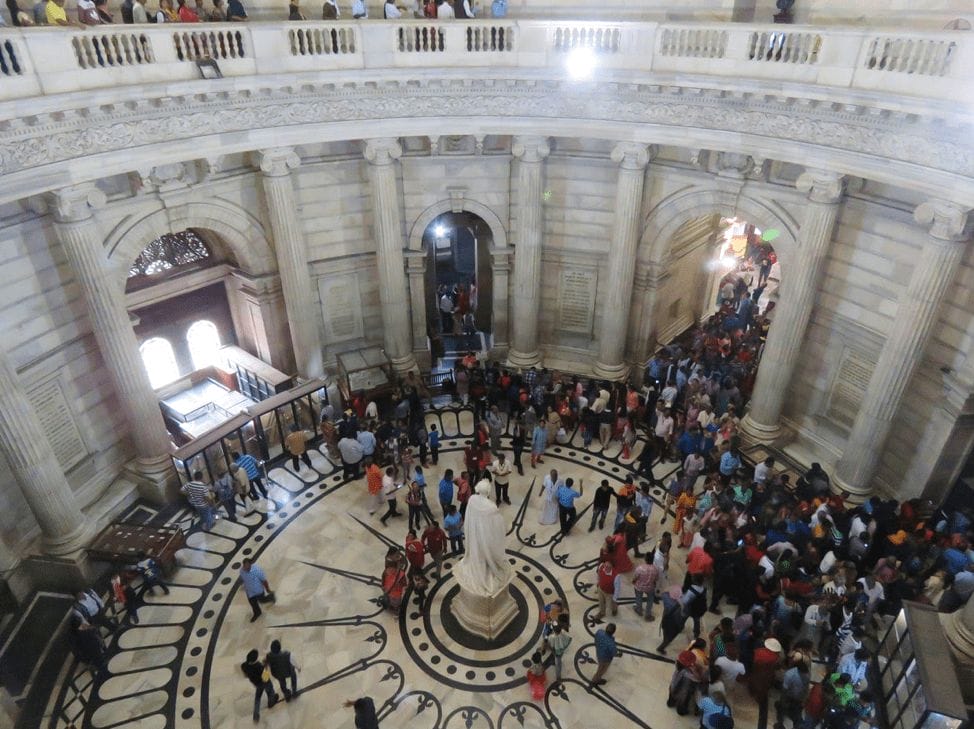
Today, this huge stately white-marble memorial serves as a grand museum filled with a vast collection of 29,000 artefacts from the period of British Empire rule, out of which 4,000 are a large collection of oil paintings and water colours by famous European artists like Charles D’oyly, Johann Zoffany, William Hadges, William Simpson, Tilly Kettle, Thomas Hickey, Bultzar Solvyns, Thomas Hickey, Emily Eden and others.
The museum has 25 galleries, some of the more popular ones being the Royal Gallery, the Queens Hall Gallery, the Sculpture Gallery, the Arms and Armory Gallery, and, of course, the Calcutta Gallery.

The Royal Gallery is a storehouse of oil paintings of Queen Victoria’s personal belongings such as her chair, writing desk, and even her piano, evidence of her receiving the sacrament at her coronation in the Westminster Abbey in June 1838; her marriage with Prince Albert (1840), the christening of the Prince of Wales, the marriage of the Prince of Wales (Edward VII) with Princess Alexandra and others.
The Durbar Hall Gallery has an array of oil paintings that depict the cultures of India and Britain.

The Calcutta Gallery is all about the past of Kolkata with paintings and photographs dating back to its foundation in by Job Charnock in the seventeenth century.
This is also India’s largest museum library with antiquarian rare books that date back to 1870s, such as the Arabian Nights, Omar Khayyam’s Rubaiyat, works of William Shakespeare and
valuable manuscripts like the Ain-i-Akbari by Abul Fazal. Also a never-ending collection of weapons, rare postage stamps, coins, and textiles are here to entice the visitors.
-
Is Victoria Memorial a World Heritage Site?
Yes, Victoria Memorial is a World Heritage Site. On January 24, 1989 it was marked as a World Heritage Site by UNESCO.
-
When was Victoria Memorial built?
The foundation stone of the Victoria Memorial was laid on January 4, 1906, and the memorial was formally opened to the public in 1921.



